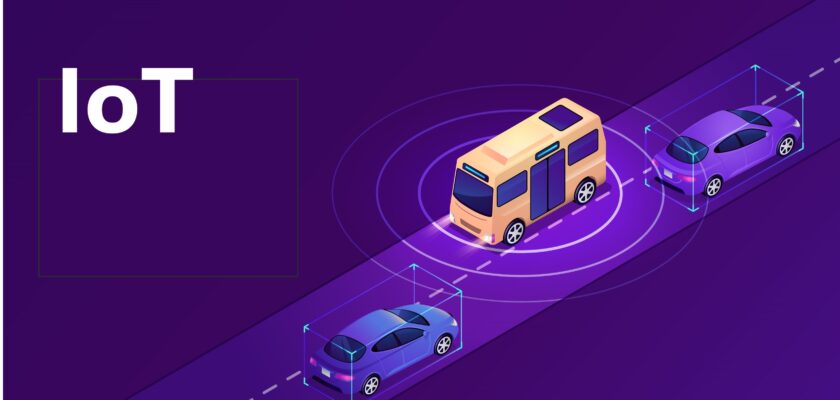IoT is has taken over by storm by a lot of industry verticals. Now IoT has started affecting transport and logistics, and it will change the entire face of these industries. It is the next technological revolution of connectivity and managing things more smartly. As the need for mobility space increases, the management costs need to be reduced. Hence it penetrated IoT solutions, complimenting the IoT connected device market.
The transportation and logistics industry has become the hotbed in the Internet of things world and it will continue to do so in the future of business. Experts forecast that IoT in Transportation & Logistics market will reach $328.76 Billion and $27,722 million by 2023, respectively.
It indicates that we should expect a significant increase in the adoption of IoT developments in the transportation and logistics incoming phase. This is the best time to dig your hands in this technology and capitalize on it as early adopters, specifically if you are dealing in the logistics industry and smart city space. Let us see what IoT developments are feasible in the transport and logistics industry.
IoT Development in Logistic industry
It is of great importance to understand the context of IoT in logistics, but what will these developments look like? How are we going to find them? Let us find out the critical IoT applications in the logistics industry
Inventory Tracking and Warehouse Management
The logistics industry mostly revolves around these two crucial parts, tracking inventory and managing goods in the warehouse. Implementing smart sensors will give a clear picture to track the good in the warehouse and maintain their position, which will create a smart warehouse management solution. RFID tags used in warehouses to manage their products, which sends information when the product has left the warehouse.
Through these smart IoT development solutions, companies will get to know the position of their goods, how much space is left in the warehouse, the location of the goods, and how much stock is left in the inventory. As a result, it will help companies to prevent losses, minimize human errors, and safe storage of good
Predictive Analytics
Predictive analytics is a bonus feature for the logistics industry, and it has become a necessity. Predictive analytics nowadays have more demand than ever, and companies are adapting to get insights like buying behavior, shipping orders, delivery schedules, among others.
IoT-connected devices gather data and share it for further analyzing data. Moreover, that data will give you the information on who is ordering what type of product and in which season. IoT developments have manipulated the logistics sector by refining the decision-making process and providing smart insights with the help of data analytics services.
It thus enabled the entire procedure to be on the fast track and to reduce the loss by minimizing human errors. It also helps to maintain the best condition for all equipment and systems.
Order and Delivery Tracking
IoT Sensors like RFID tags and AIDC a great way to track the good in your warehouse and manage accordingly. Tracking the order and estimating the delivery date is extremely crucial in the logistics industry. Most companies today use sensors to monitor orders in real-time and this result in better customer service and when it is expected to reach customers destination.
Improving customer service and controlling end-to-end product distribution process IoT plays a more significant part. A customer can get real-time access to the product location and order information from the date and time they purchased the product.
IoT Developments in the Transport industry
IoT has already been incorporated in the transport sector, through connectivity between the car and the human being. Now let us find out more about what IoT will offer in the transportation industry.
Monitor and Maintain Vehicle Health
Not everybody buys a vehicle that knows everything about the vehicle. Nevertheless, if you are trying to maintain your vehicle for the long haul then you should know all the basic things like tyre pressure, battery life of the vehicle, vehicle engine health, among others. Still, if you are not able to monitor all these things then you should look into some IoT solutions.
- Preventing tyre pressure and vehicle maintenance: Traditionally a light used to triggered signal whether there is a problem in the tyre pressure or your vehicle battery life is getting over. Now with the help of IoT technology, you will able to receive exact and easy-to-read data that will give the overall problems about the vehicle before you find them.
- Fuel consumption monitoring: Now you can also monitor fuel consumption with the help of IoT level sensors that are installed in the fuel tank of the vehicle. It will reduce fuel consumption and send the report of fuel consumption when the vehicle was idle or in motion. This also means that it will reroute you to the best possible routes to avoid fuel wastage.
Geo-fencing in transportation
The use of geofencing is going onto a completely new level. As GPS advances, you can now closely track and monitor the exact position of fleets. The transport industry can be the most benefitted industry from geo-fencing technology. It allows you to receive and send updates if a driver misses his defined route. It can also guide him to take an alternate route if there is congestion on his way, saving a lot of delivery time.
All paper files are replaced with a digital system and a cloud-based monitoring system that shares fleet information in real-time. IoT development in transportation has changed the complete face of the industry by improving business performance and reducing CO2 emissions from vehicles.
Public Transit & Asset Tracking
With the help of IoT developments in the Transport sector, it is now very feasible to track and manage your assets information, like the location of the asset in which rack and what floor it has kept, etc. With IoT deployments in the trucks, you will able to track the real-time location of the truck, how much order delivery is left to deliver, or how much load the truck is carrying.
The public transit system offers many benefits to the consumers like tracking the real-time location of the vehicle and at what time it will reach its destination. It will also help consumers with re-routing the routes of the vehicles and navigate them to alternate finalized destination.
All this data is tracked and sent to the central system and then to IoT enabled mobile devices. Hence, IoT development in the transportation sector has wiped out all the challenges and issues faced in this industry
Conclusion
Today we have seen how the transportation and logistics industry is benefitting from IoT solutions. We covered the different developments of IoT in transportation and Logistics and how it is made use of.

